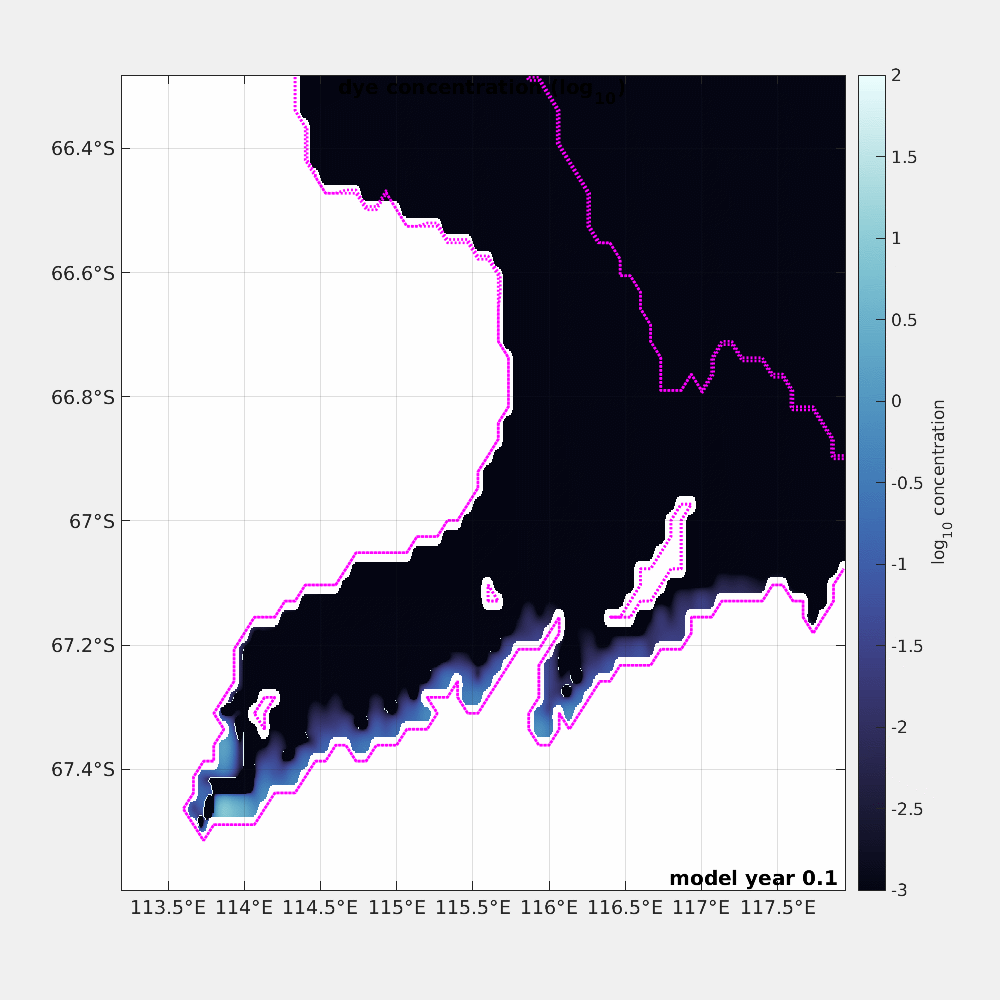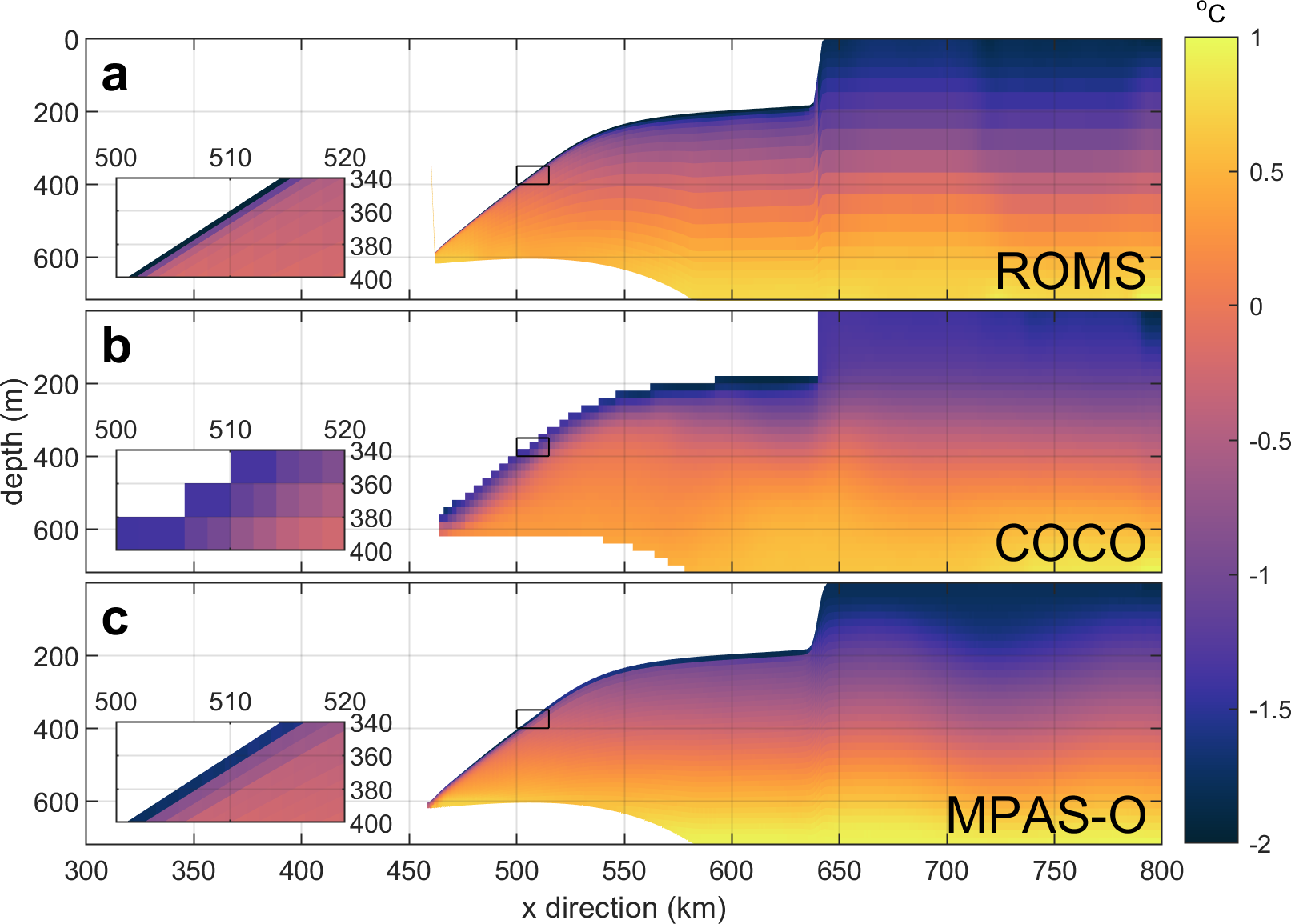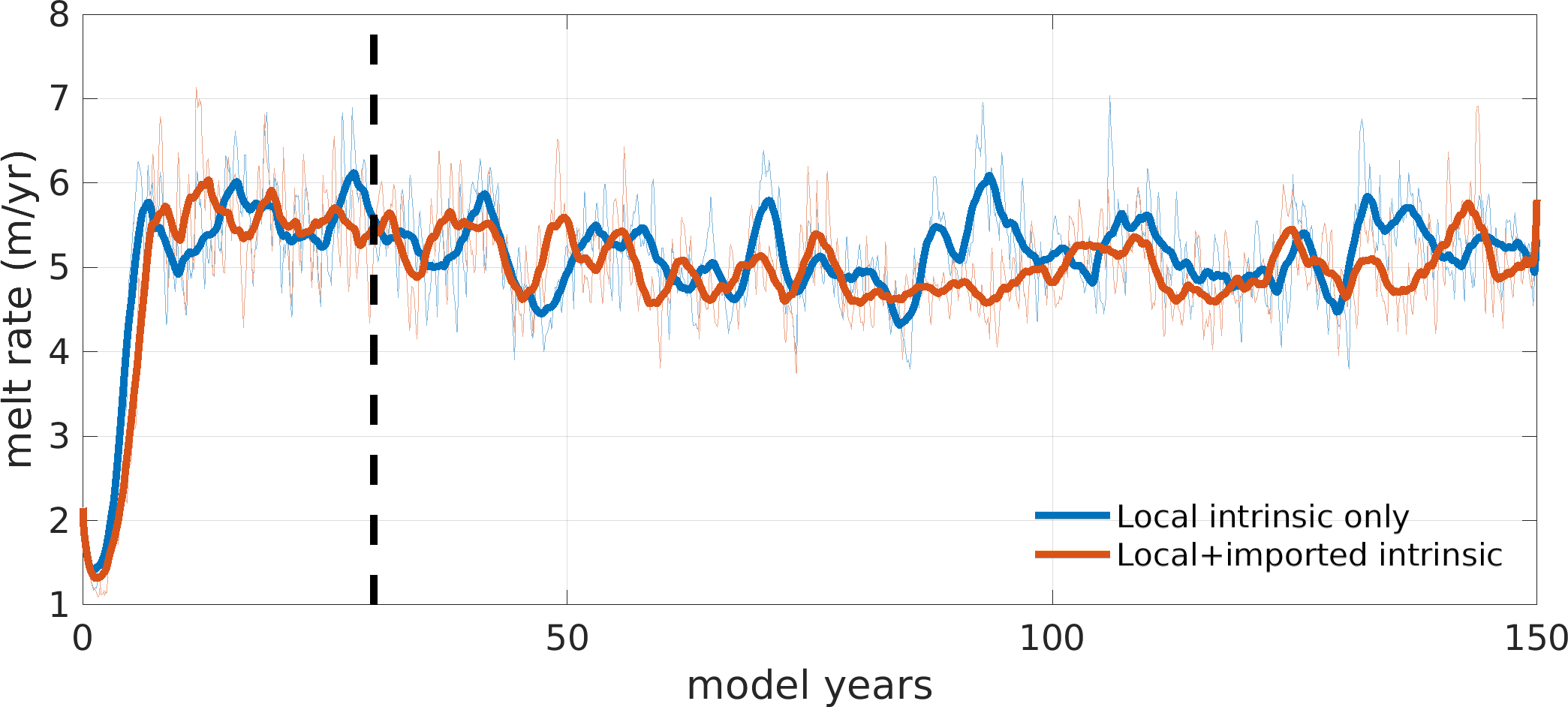Research
Ice Shelf-Ocean interaction
My research over the last few years has focussed on how Antarctic ice shelves are influenced and impacted by Southern Ocean processes, through the use of supercomputer numerical ocean model simulations. In this research I have focussed on both broad- and fine-scale processes.

Subglacial freshwater discharge
The Antarctic ice sheet melts, either at the surface or at its base, and the subglacial meltwater eventually drains towards the coastline. This subglacial freshwater discharge emerges in some locations beneath great ice shelves. The addition of cold freshwater at depth has an as yet unquantified impact. Likely, it will increase melting (as suggested through surface analyses), but ocean models provide the best method to investigate this process. I have used the ocean model ROMS to add subglacial discharge beneath ice shelves in Antarctica and quantify the impact.

Thermodynamic parameterisations
Through the application of simplified, idealised geometry, I have investigated fundamental characterisations of thermodynamic exchange, for example, the effect of different oceanic regimes, ice shelf roughness and melting parameterisations and dependencies. These idealised geometry models provide crucial insight into this complex environment and highlight the importance of capturing the full gamut of realistic processes, such as tides and turbulent heat exchange, for producing more realistic simulations of basal melting.

Climate variability and change
I am interested in the impact of natural, intrinsic ocean variability on melt rates. This has huge implications for detecting and attributing observed ice shelf change.

Coordinating models and observations
I believe that models should be used in conjunction with observational campaigns in an integrated sense. For example, for predicting observational sites through to interpreting sparse observational datasets.